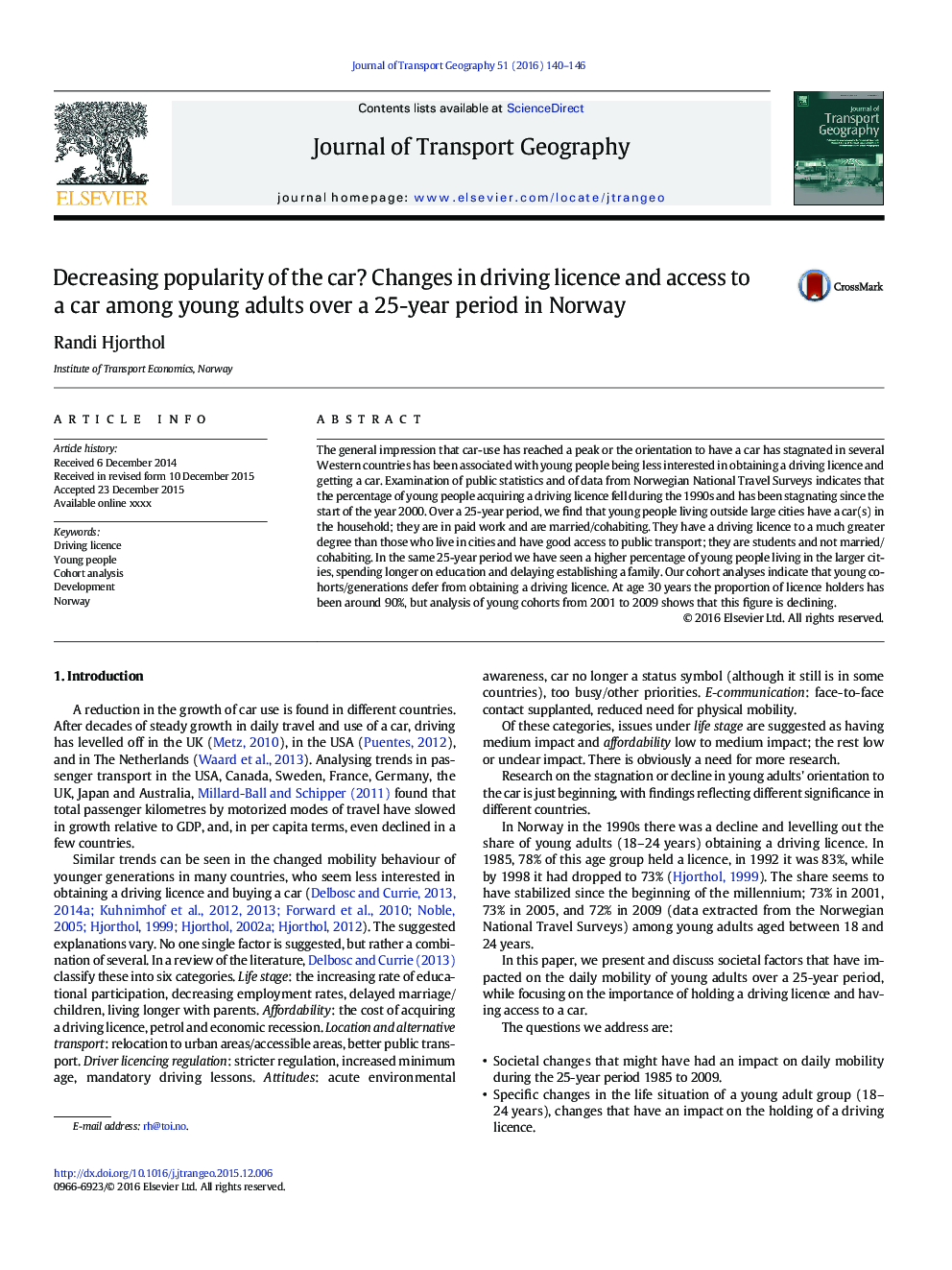| Article ID | Journal | Published Year | Pages | File Type |
|---|---|---|---|---|
| 7485600 | Journal of Transport Geography | 2016 | 7 Pages |
Abstract
The general impression that car-use has reached a peak or the orientation to have a car has stagnated in several Western countries has been associated with young people being less interested in obtaining a driving licence and getting a car. Examination of public statistics and of data from Norwegian National Travel Surveys indicates that the percentage of young people acquiring a driving licence fell during the 1990s and has been stagnating since the start of the year 2000. Over a 25-year period, we find that young people living outside large cities have a car(s) in the household; they are in paid work and are married/cohabiting. They have a driving licence to a much greater degree than those who live in cities and have good access to public transport; they are students and not married/cohabiting. In the same 25-year period we have seen a higher percentage of young people living in the larger cities, spending longer on education and delaying establishing a family. Our cohort analyses indicate that young cohorts/generations defer from obtaining a driving licence. At age 30Â years the proportion of licence holders has been around 90%, but analysis of young cohorts from 2001 to 2009 shows that this figure is declining.
Related Topics
Life Sciences
Environmental Science
Environmental Science (General)
Authors
Randi Hjorthol,
